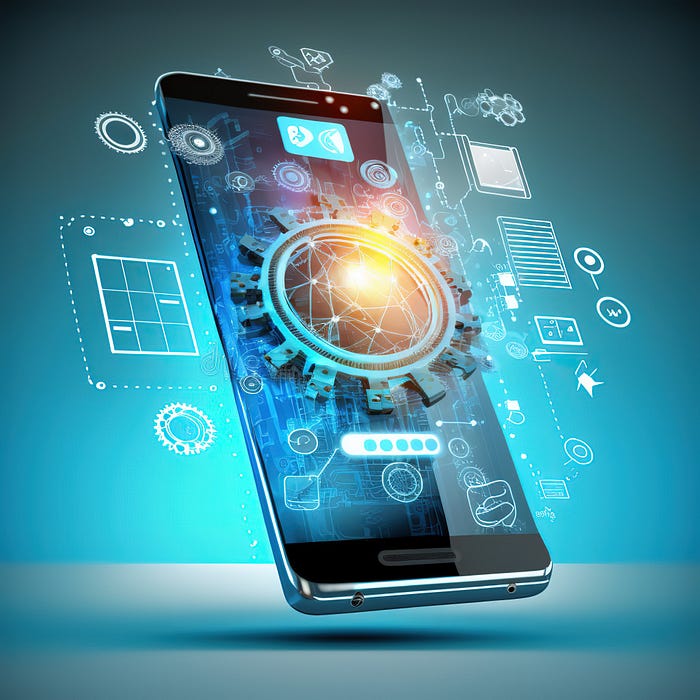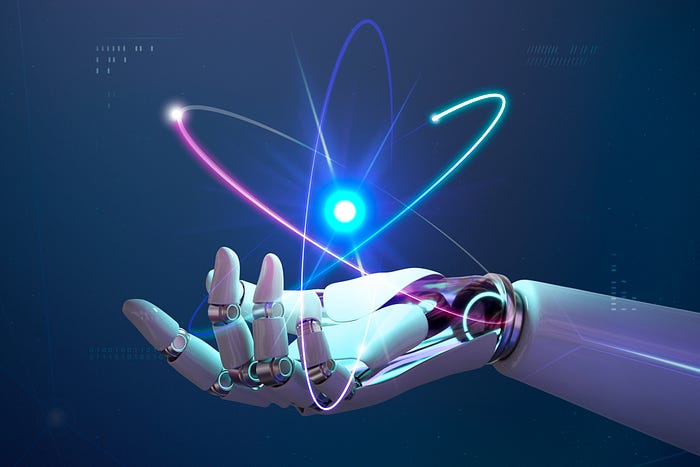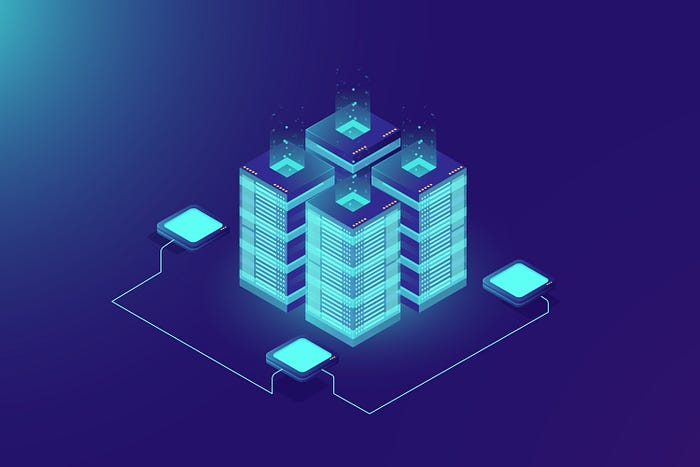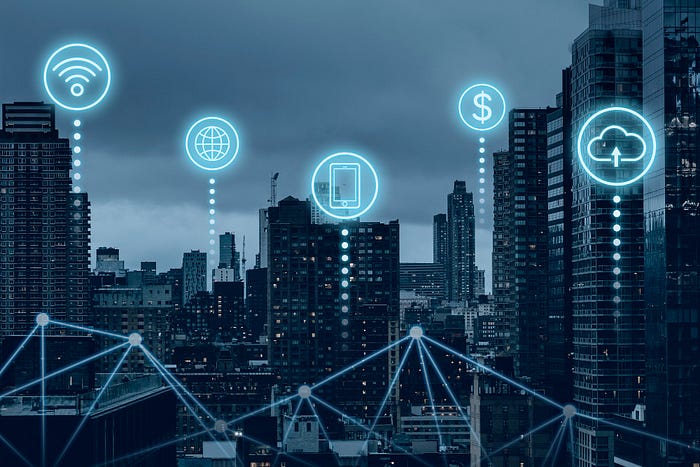The mobile app development industry is constantly evolving, with new technologies emerging all the time. This can make it difficult for businesses to keep up with the latest trends and ensure that their apps are using the most cutting-edge technology.
In this blog post, we will discuss some of the latest technologies that are shaping the future of mobile app development, including AngularJS development, .NET Core development, and hybrid app development. We will also provide tips on how businesses can use these technologies to create innovative and engaging apps that will wow their users.

1. 5G
5G is the fifth generation of cellular network technology, and it is poised to revolutionize the way we use mobile devices. 5G offers significantly faster speeds and lower latency than previous generations of cellular networks. This means that mobile apps will be able to load and run much faster, and users will be able to experience a smoother and more responsive user experience.
5G is also expected to enable new mobile app features and capabilities that were not possible with previous generations of cellular networks. For example, 5G could be used to power real-time AR/VR experiences, high-definition video streaming, and even self-driving cars.
5G is the fifth generation of cellular network technology, and it is poised to revolutionize the way we use mobile devices. 5G offers significantly faster speeds and lower latency than previous generations of cellular networks. This means that mobile apps will be able to load and run much faster, and users will be able to experience a smoother and more responsive user experience.
Here are some of the benefits of 5G for mobile apps:
Faster speeds: 5G is expected to offer speeds up to 100 times faster than 4G LTE. This means that mobile apps will be able to load and run much faster, and users will be able to experience a smoother and more responsive user experience.
Lower latency: Latency is the time it takes for data to travel from one point to another. 5G is expected to offer latency that is up to 10 times lower than 4G LTE. This means that mobile apps will be able to respond to user input much faster, and users will be able to enjoy a more immersive and engaging experience.
Improved user experience: The combination of faster speeds and lower latency will lead to a significantly improved user experience for mobile apps. Users will be able to enjoy faster downloads, smoother streaming, and more responsive apps. This will make mobile apps more enjoyable to use, and it will encourage users to spend more time using them.
5G is still in its early stages of development, but it has the potential to revolutionize the way we use mobile devices. By offering significantly faster speeds and lower latency, 5G will make mobile apps more enjoyable to use and will encourage users to spend more time using them. This will lead to new opportunities for businesses to develop and market mobile apps.
Here are some specific examples of how 5G can be used to improve mobile apps:
Real-time gaming: 5G’s low latency will make it possible to play real-time multiplayer games without any lag. This will open up new possibilities for gaming developers, who will be able to create more immersive and engaging experiences.
Virtual reality/augmented reality: 5G’s high bandwidth will make it possible to stream high-quality VR/AR content without any buffering. This will make VR/AR more accessible to a wider range of users, and it will open up new possibilities for businesses to use VR/AR for marketing, training, and education.
Self-driving cars: 5G’s high bandwidth and low latency will be essential for the development of self-driving cars. Self-driving cars will need to be able to communicate with each other and with traffic infrastructure in real time in order to operate safely.
These are just a few examples of how 5G can be used to improve mobile apps. As 5G technology continues to develop, we can expect to see even more innovative and exciting ways to use it to improve the mobile app experience.
2. Artificial Intelligence (AI)
AI is another cutting-edge technology that is having a major impact on the mobile app development industry. AI can be used to create mobile apps that are more intelligent and user-friendly. For example, AI can be used to power features such as chatbots, voice recognition, and personalized recommendations.
AI can also be used to improve the security and performance of mobile apps. For example, AI can be used to detect and block fraudulent transactions, and it can also be used to optimize app performance by identifying and eliminating bottlenecks.

AI-powered features in mobile apps are becoming increasingly popular, as they offer a number of benefits to both users and businesses. Here are a few examples of AI-powered features that are being used in mobile apps:
Chatbots
Chatbots are computer programs that can simulate conversation with human users. They are often used in customer service applications, where they can answer questions and resolve issues without the need for human intervention. Chatbots can also be used to provide personalized recommendations, generate content, and more.
Voice recognition
Voice recognition is a technology that allows users to interact with their devices using their voice. This can be used to control apps, make calls, send messages, and more. Voice recognition can be especially helpful for people who have difficulty typing or who are driving.
Personalized recommendations
Personalized recommendations are suggestions that are made to users based on their past behavior and preferences. This can be used to recommend products, services, content, and more. Personalized recommendations can help users to discover new things that they are interested in, and they can also help businesses to increase sales and engagement.
AI can also be used to enhance the security and performance of mobile apps. Here are a few examples:
Fraud detection
AI can be used to detect fraudulent transactions. This can be done by analyzing user behavior, transaction patterns, and other data. Fraud detection can help businesses to protect themselves from financial losses and to maintain a high level of customer trust.
Performance optimization
AI can be used to optimize the performance of mobile apps. This can be done by identifying and eliminating bottlenecks, predicting user behavior, and optimizing resource usage. Performance optimization can help businesses to improve the user experience and to reduce the cost of running their apps.
AI is a powerful technology that can be used to improve the functionality and user experience of mobile apps. By using AI-powered features, businesses can create apps that are more engaging, efficient, and secure.
Here are some additional benefits of using AI in mobile apps:
Increased customer engagement: AI can help to increase customer engagement by providing personalized recommendations, answering questions, and resolving issues.
Improved customer service: AI can help to improve customer service by providing 24/7 support and by resolving issues quickly and efficiently.
Increased sales: AI can help to increase sales by providing personalized recommendations and by targeting ads to specific users.
Reduced costs: AI can help to reduce costs by automating tasks, optimizing performance, and preventing fraud.
Overall, AI is a powerful technology that can be used to improve the functionality, user experience, and business value of mobile apps.
3. Machine Learning (ML)
ML is a subset of AI that allows software applications to learn and improve without being explicitly programmed. ML is being used in a wide variety of mobile apps, including those that use facial recognition, voice recognition, and natural language processing.
ML can also be used to improve the user experience of mobile apps by personalizing content and recommendations. For example, ML can be used to suggest products that users are likely to be interested in, or it can be used to provide users with personalized news feeds.
here are some examples of ML applications in mobile apps:
Facial recognition: Facial recognition is a technology that allows apps to identify users based on their faces. This can be used for security purposes, such as unlocking devices or authorizing payments. Facial recognition can also be used to personalize user experiences, such as by recommending content or products that the user is likely to be interested in.
Voice recognition: Voice recognition is a technology that allows apps to understand and respond to spoken commands. This can be used to control apps, make calls, send messages, and more. Voice recognition can be especially helpful for people who have difficulty typing or who are driving.
Natural language processing: Natural language processing (NLP) is a field of computer science that deals with the interaction between computers and human (natural) languages. NLP is used in a variety of mobile apps, such as chatbots, virtual assistants, and translation apps. NLP can be used to understand and respond to user requests, as well as to generate natural language text.
Improving user experience through ML-driven personalization: ML-driven personalization is the use of machine learning (ML) to improve the user experience of mobile apps. This can be done by recommending content or products that the user is likely to be interested in, or by tailoring the app’s interface to the user’s individual needs. ML-driven personalization can help to increase user engagement and satisfaction, and it can also help to improve the conversion rate of mobile apps.
Here are some specific examples of how ML-driven personalization can be used to improve the user experience of mobile apps:
Content recommendations: ML can be used to recommend content to users based on their past behavior and preferences. This can be done by analyzing user data, such as the content they have viewed or the products they have purchased. Content recommendations can help users to discover new things that they are interested in, and they can also help businesses to increase engagement and sales.
Personalized news feeds: ML can be used to create personalized news feeds for users. This can be done by analyzing user data, such as the topics they are interested in and the sources they trust. Personalized news feeds can help users to stay up-to-date on the latest news and information that is relevant to them.
Other examples of ML-driven personalization:
Personalized recommendations for products, services, and experiences
Tailored app interfaces
Targeted advertising
Personalized customer service
ML-driven personalization is a powerful tool that can be used to improve the user experience of mobile apps. By using ML to understand and respond to user needs, businesses can create apps that are more engaging, efficient, and effective.
4. Blockchain
Blockchain is a distributed ledger technology that is used to record transactions securely and permanently. It has gained immense popularity and has been adopted by various industries such as finance, healthcare, and supply chain management. Blockchain’s ability to ensure transparency and security makes it an ideal choice for mobile app development.
To fully leverage the potential of blockchain technology, businesses can consider hiring skilled blockchain developers. These professionals specialize in implementing blockchain solutions and integrating them into mobile applications. By hiring a blockchain developer, businesses can unlock the true power of this technology and create innovative and secure mobile apps.

With the expertise of a blockchain developer, businesses can develop mobile apps that facilitate secure payments. Blockchain-based payment systems offer enhanced security by eliminating the need for intermediaries and providing a decentralized and tamper-proof environment. This ensures that users can conduct transactions with confidence, knowing that their sensitive information is protected.
Additionally, web 3.0 blockchain technology enables the creation of mobile apps that track the provenance of goods and services. By utilizing blockchain’s immutability and transparency, businesses can provide their users with a clear view of the entire supply chain. This not only enhances trust but also enables users to verify the authenticity and origin of products or services.
The role of a blockchain developer in mobile app development is crucial. These professionals possess the expertise to design and implement blockchain solutions that align with the specific needs of businesses. They can integrate blockchain functionalities seamlessly into mobile apps, ensuring a smooth user experience while harnessing the security and transparency benefits that blockchain offers.
In summary, blockchain technology has the potential to revolutionize the mobile app development industry. By incorporating blockchain into mobile apps, businesses can create secure and transparent platforms for various purposes, including secure payments and tracking the provenance of goods and services. To make the most of this technology, businesses should consider hiring a blockchain developer who can bring their expertise and experience to the development process. With the guidance of a skilled blockchain developer, businesses can stay at the forefront of innovation and deliver mobile apps that provide enhanced security and reliability to their users.
Blockchain is a distributed ledger technology that allows for secure, transparent, and tamper-proof transactions. This makes it a promising technology for a variety of mobile app use cases, including:
Secure payments: Blockchain can be used to create secure payment systems that are resistant to fraud and hacking. This is because blockchain transactions are verified by a network of computers, rather than a central authority.
Tracking provenance: Blockchain can be used to track the provenance of goods and services, ensuring that they are authentic and have not been tampered with. This is useful for industries such as food and pharmaceuticals, where it is important to be able to trace the source of products.
Smart contracts: Blockchain can be used to create smart contracts, which are self-executing contracts that are stored on the blockchain. This can automate a variety of tasks, such as payments, shipping, and insurance.
Decentralized applications (DApps): Blockchain can be used to create DApps, which are applications that are not controlled by a central authority. This makes them more secure and transparent than traditional applications.
Advantages of blockchain in enhancing app security and transparency
Blockchain offers a number of advantages over traditional technologies for mobile app development, including:
Security: Blockchain is a secure technology that is resistant to fraud and hacking. This is because blockchain transactions are verified by a network of computers, rather than a central authority.
Transparency: Blockchain is a transparent technology that allows users to track all transactions on the blockchain. This makes it difficult to commit fraud or to hide information.
Scalability: Blockchain is a scalable technology that can handle a large number of transactions. This makes it suitable for use in mobile apps that need to handle a high volume of transactions.
Cost-effectiveness: Blockchain is a cost-effective technology that can save businesses money on transaction fees and other costs.
Overall, blockchain is a promising technology that can be used to improve the security, transparency, and scalability of mobile apps. By using blockchain, businesses can create apps that are more secure, reliable, and efficient.
5. The Internet of Things (IoT)
The IoT is a network of physical objects that are connected to the internet. The IoT is being used in a wide variety of industries, including manufacturing, healthcare, and retail.
The IoT has the potential to revolutionize the mobile app development industry by making it possible to create mobile apps that interact with physical objects. For example, mobile apps can be used to control smart home devices, or they can be used to track the location of assets.

The Internet of Things (IoT) is a network of physical objects that are connected to the internet. These objects can collect and exchange data, which can be used to improve efficiency, productivity, and safety.
Here are some examples of IoT applications in different industries:
Manufacturing: IoT can be used to monitor and control machines, track inventory levels, and improve quality control. For example, sensors can be used to collect data on machine performance, which can be used to identify potential problems before they cause a breakdown. This can help to improve efficiency and productivity, as well as reduce costs.
Healthcare: IoT can be used to monitor patients’ health, track medical equipment, and improve patient care. For example, wearable devices can be used to collect data on patients’ heart rate, blood pressure, and other vital signs. This data can be used to track patients’ health and to identify potential problems early on. This can help to improve patient care and to reduce costs.
Retail: IoT can be used to track inventory levels, improve customer service, and personalize shopping experiences. For example, sensors can be used to track the movement of products in a store. This data can be used to identify popular products and to ensure that shelves are always stocked. This can help to improve customer satisfaction and to increase sales.
Enabling mobile apps to interact with physical objects:
IoT can be used to enable mobile apps to interact with physical objects. This can be done by using sensors and actuators to collect and exchange data. For example, a mobile app could be used to control a smart home device, such as a thermostat or a light bulb. The app could collect data on the current temperature or light level, and it could use this data to adjust the settings of the device. This could help to save energy and to improve comfort.
Here are some examples of IoT applications that enable mobile apps to interact with physical objects:
Smart home devices: Smart home devices can be controlled by mobile apps. For example, a user could use a mobile app to turn on the lights in their home, lock the doors, or adjust the thermostat.
Asset tracking: Mobile apps can be used to track the location of assets. For example, a company could use a mobile app to track the location of its vehicles or its inventory.
Security: Mobile apps can be used to improve security. For example, a user could use a mobile app to lock their doors or to arm their security system.
Overall, IoT is a promising technology that has the potential to revolutionize many industries. By enabling mobile apps to interact with physical objects, IoT can improve efficiency, productivity, safety, and comfort.
To implement these technologies effectively, businesses can consider partnering with an AngularJS development company or hiring hybrid developers who can build apps that work across different platforms. Additionally, .NET Core development can be utilized for robust backend systems, and net core development services can ensure efficient development and maintenance.
When looking for top-quality app development, businesses can explore hiring the best Indian mobile app developers, who are renowned for their expertise and cost-effective solutions. For specific app requirements like a Swiggy-like app, hiring a skilled Swiggy app developer can ensure the delivery of a reliable and feature-rich application.
Moreover, businesses can also consider hiring specialized developers, such as node.js developers or Xamarin developers, to leverage the unique capabilities of these technologies for their mobile app projects.
In conclusion, staying up-to-date with the latest technologies in mobile app development is crucial for businesses to create innovative and engaging apps. By harnessing the power of technologies like 5G, AI, ML, blockchain, and IoT, businesses can deliver exceptional user experiences, enhanced security, and advanced features. Partnering with expert development companies and hiring skilled developers is essential for leveraging these technologies effectively and staying ahead in the competitive app market.
Comments
Post a Comment